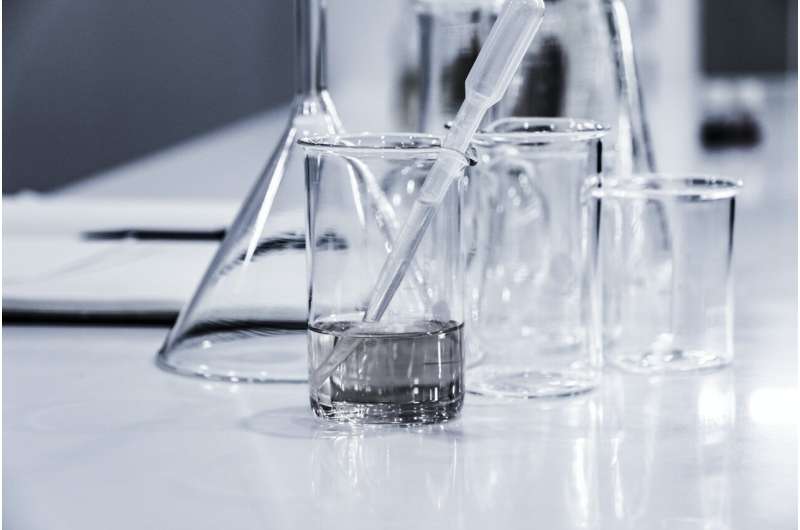How a research team uncovered sugar's ability to tell us about the state of our cells

Sugar surrounds us. Not just on our way to work as we resist a morning doughnut or after dinner as we peruse the dessert menu, but our cells are literally adorned with sugars. As NYU Chemistry Professor Lara Mahal explains, our cells are like M&M's - sugar coated. These cell surface sugars aren't just for decoration - they encode fundamental information about the cell.
Sugars are carbohydrates - a molecule consisting of carbon, hydrogen and oxygen - that can come in a variety of forms. The glycome refers to all sugars including simple sugars like glucose, a key component in table sugar, or complex sugars made up of three or more simple sugars like maltodextrin which is commonly found in soda or candy. These sugars are bound to the cell surface of bacteria, worms, mice, and all the cells in our body. Mahal's lab works to understand the 'sugar code' - why the sugars are on the cell surface and what information they can tell us about our cells.
In order to study sugars, Mahal's lab invented and developed lectin microarray technology. Lectins are carbohydrate binding proteins that have a high affinity for sugar. The lab's current microarray uses up to 116 different lectins and antibodies that bind the glycome - conservatively estimated to contain up to 7,000 different sugars. Rather than searching for one type of sugar after another, this technology allows researchers to detect the presence of multiple sugars on the same cell.
Mahal's team decided to work with NCI-60 cells, a cell line set consisting of 60 human cancer cells from 9 different types of tissue including brain, kidney, colon, and skin. By using the NCI-60 set, Mahal's team can search for a sugar code amongst cells and eventually look for anomalies in the code that may be driven by cancer. Lectin microarray analysis on the NCI-60 cell lines showed that cell membrane sugar does reflect a distinct and informative code. The sugars on the cell membrane cluster based on their tissue type - in other words, the different tissue types from the NCI-60 cells each had their own sugar pattern.
As Mahal's team dove further into their data, they realized that sugar on the cell membrane not only indicated tissue type, but the biological phenotype or 'status' of the cell as well. For example, cells that are moving have a different sugar signature than cells that are immobile. A cell that is recovering from an injury will have a different sugar signature than a healthy cell from the same tissue type. Cell status sheds light on clinically relevant cell states such a cancer or neural development.
Discoveries continued as Mahal's students cross referenced their findings with microRNA findings collected by Professor William Reinhold's lab at the National Institute of Health (NIH). MicroRNA, (not to be confused with mRNA - the molecules responsible for decoding our genetic information), is a non coding molecule that can bind mRNA and thus regulate gene expression. Mapping both Mahal's & Reinhold's data sets from the NCI-60 cell line together revealed a master map, indicating that microRNA is a critical regulator of the glycome. More specifically, key microRNA control glycosylation - the process of forming sugar molecules. Understanding glycosylation expression is key in our approach to treating the 65 known disorders associated with glycosylation dysregulation—including Peter's Plus Syndrome or Severe Epileptic Syndrome.
After obtaining the master glycome-microRNA map using computational techniques, it was time to return to the lab bench. Inhibiting microRNA led to changes in sugar related mRNA and protein. Mahal's group validated three enzymes responsible for altering the glycome that are also regulated by microRNA - high mannose, Fucoseand β-GalNAc. These enzymes are just the beginning and there are many more glycome related proteins out there to explore.
Mahal has big plans to match her big data. The lectin microarray currently uses lectins heavily involved in human health, but she hopes to expand using more lectins and thus capture an even bigger and better sugar signature. Much of the work that went into this paper explored how information on the inside of the cell changes the sugars on the outside of the cell. Mahal's lab has started to ask the opposite - how do cell surface sugars change what is happening on the inside of the cell? More sweet surprises are expected from the sugar project as graduate students and Post docs are still hard at work unraveling the sugar code.
Provided by New York University

















